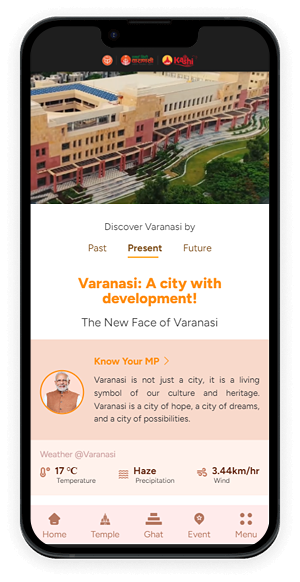शिवाला घाट के बारे में
Shivala Ghat stands like a quiet sentinel — broad, solemn, and edged by the presence of Shivala Palace, a majestic structure built by the Nepali king Sanjay Vikram Shah in the 19th century. Here, stone and story meet, and the Ganga flows with the patience of someone who has seen it all.
First of all, the King of Banaras, Balwant Singh had made this ghat pucca in 1767, and later in 1770, Chet Singh, then King of Kashi extended it during the period when his palace was under construction. For the wellbeing of the pilgrims from South India, the King of Banaras built a monastery named Brahmendra Math. It currently serves as the citadel of the Iyer Brahmin and the Telugu speaking Shaivite community of South India. The northern part is still recognized as the Shivala ghat and houses a Shiva temple.
Unlike the more ritual-heavy ghats, Shivala is reflective — a place of old palaces, long shadows, and quiet walkers. The palace looms above, its windows like eyes that have seen centuries. Walls cracked with time. Doors that once opened for royalty now welcome pilgrims and stray sunlight.
The ghat’s name comes from Shiva, the ever-present lord of Kashi, and indeed, this ghat feels like a place where Shiva himself might pause — not to be worshipped in grandeur, but to sit in silence, watching the boats drift by, the firelight flicker, the city hum behind him.







